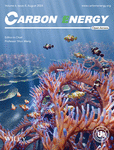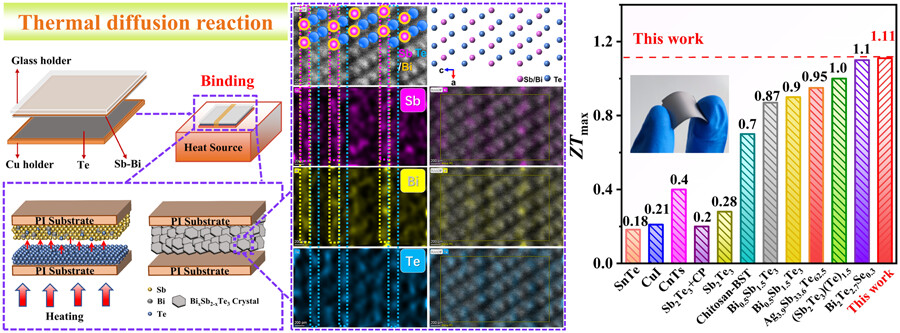Journal list menu
Export Citations
Download PDFs
COVER
Cover Image, Volume 6, Number 8, August 2024
- First Published: 29 August 2024
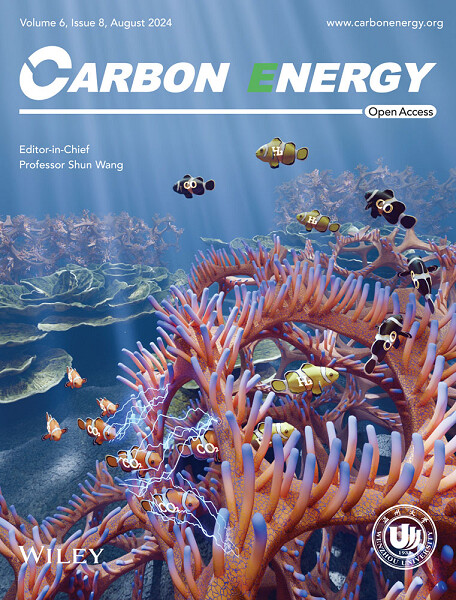
Front cover image: Electrocatalytic CO2 reduction to syngas (CO and H2) offers an efficient way to mitigate carbon emissions and store intermittent renewable energy in chemicals. However, it is tricky to produce an adjustable ratio of syngas due to the difficulty of maintaining a balance between CO2 reduction reaction (CO2RR) and the competing hydrogen evolution reaction (HER). In article number cey2.461, Zhang et al. prepare hierarchical one-dimensional/three-dimensional nitrogen-doped porous carbon (1D/3D NPC) by carbonizing the composite of Zn-MOF-74 crystals in situ grown on a commercial melamine sponge (MS). Benefiting from the unique spatial environment of 1D/3D NPC, the reaction kinetics is significantly improved by increasing specific surface areas, CO2 adsorption, mass transport, and facilitating electron transfer from the 3D N-doped carbon framework to 1D porous carbon. The bifunctional activity of N-doped carbon materials for CO2RR and HER is beneficial for regulating the balance between CO2RR and HER. The carbonizing temperatures can affect the distribution of N species and further dominate syngas composition ratios.
BACK COVER
Back Cover Image, Volume 6, Number 8, August 2024
- First Published: 29 August 2024
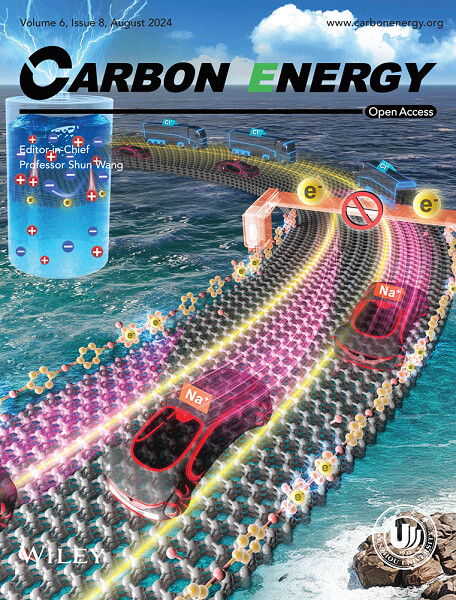
Back cover image: The ion transport properties of porous membrane materials are essential in numerous applications, and achieving synergistic enhancement of both permeability and selectivity remains a significant challenge. In the article number cey2.458, Zhu and co-workers reported a strategy to address this challenge by developing a charge-tunable nanofluidic membrane. Inserting chargetunable copolymers into GO membranes, effectively matches the charge density of the membrane with the pore size. This synergistic enhancement strategy led to a nearly 10-fold increase in osmotic energy generation, and it was expected to optimize the energy structure and promote the utilization and conversion of clean energy in the future.
ISSUE INFORMATION
RESEARCH ARTICLE
MOF-derived 1D/3D N-doped porous carbon for spatially confined electrochemical CO2 reduction to adjustable syngas
- First Published: 19 March 2024
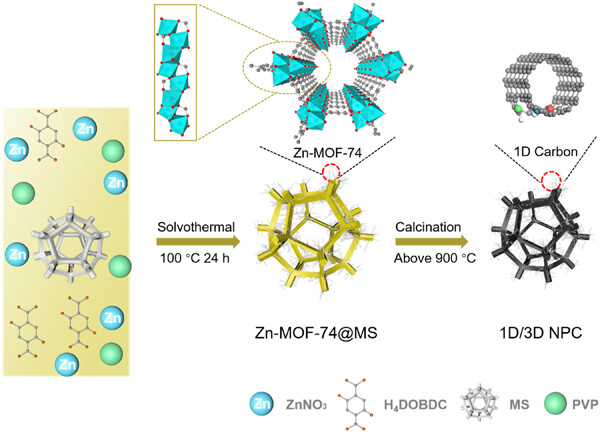
The hierarchical one-dimensional/three-dimensional nitrogen-doped porous carbon (1D/3D NPC) was prepared by carbonizing the composite of Zn-MOF-74 crystals in situ grown on a commercial melamine sponge, for electrochemical CO2 reduction reaction (CO2RR). The 1D/3D NPC exhibits a high CO/H2 ratio (5.06) and CO yield (31 mmol g−1 h−1) at −0.55 V, which is 13.7 times and 21.4 times of 1D porous carbon (derived from Zn-MOF-74) and N-doped carbon (carbonized by MS), respectively. This is attributed to the spatial confinement effect of 3D N-doped carbon framework on 1D porous carbon, which significantly improves the reaction kinetics of CO2RR by increasing specific surface areas, CO2 adsorption, mass transport, and facilitating electron transfer from the 3D N-doped carbon framework to 1D carbon.
Permeability and selectivity synergistically enhanced nanofluidic membrane for osmotic energy harvesting
- First Published: 13 March 2024
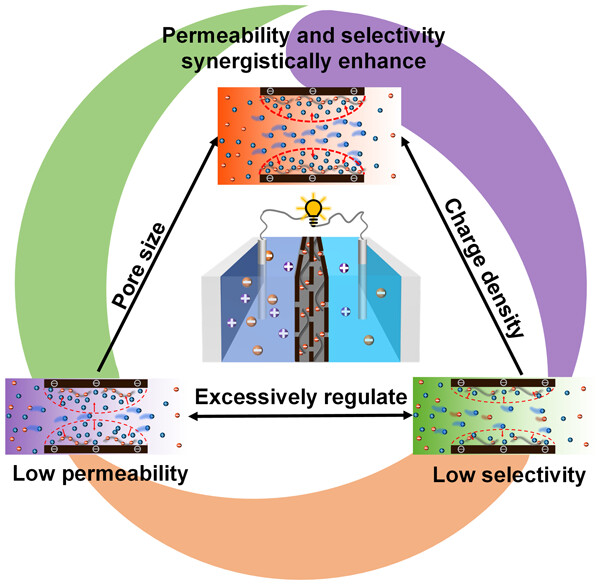
Transmembrane properties of ions are crucial for osmotic energy conversion. In this study, to achieve synergistic enhancement of permeability and selectivity, the mechanism of charge density and pore size in ion transport are studied in-depth. Results of the experiment and theoretical calculation demonstrate that the charge density and pore size should be matched to construct the optimal ion channel. This collaborative enhancement strategy of permeability and selectivity is expected to promote the utilization of clean energy in the future.
Building stabilized Cu0.17Mn0.03V2O5−□·2.16H2O cathode enables an outstanding room-/low-temperature aqueous Zn-ion batteries
- First Published: 13 March 2024
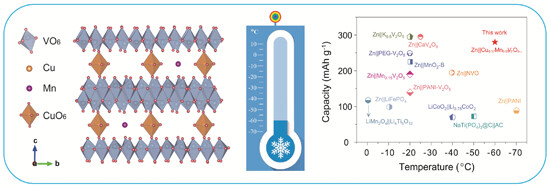
An excellent room-/ultralow-temperature Cu0.17Mn0.03V2O5−□·2.16H2O cathode is designed in which [CuO6] octahedra act as pillars pinning the vanadium oxide layers, establishing stabilized two-dimensional channels for fast Zn2+ storage; meanwhile, the pre-intercalated Mn ions in interlayer further expand the interlayer spacing and increase the concentration of oxygen defects, enabling fast ionic/electronic diffusion kinetics.
Three-dimensional (3D)-printed MXene high-voltage aqueous micro-supercapacitors with ultrahigh areal energy density and low-temperature tolerance
- First Published: 07 March 2024
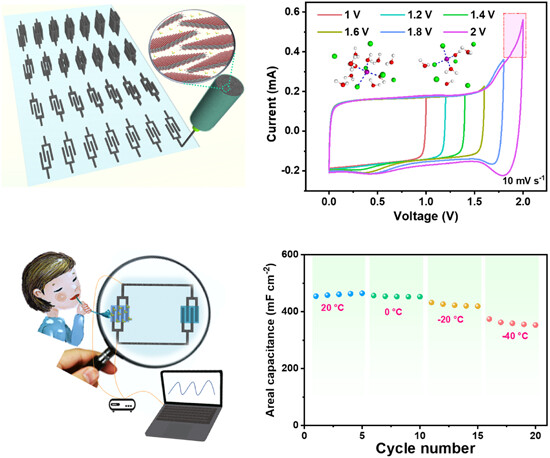
We introduce an additive-free aqueous MXene ink for three-dimensional printing customizable all-MXene microelectrodes, enabling the construction of quasi-solid-state MXene symmetric micro-supercapacitors (M-SMSCs) operating at 1.8 V. These M-SMSCs show an ultrahigh areal energy density of 1753 μWh cm−2 and exceptional low-temperature performance, operating reliably at −40°C. Integration with humidity sensors on a single planar substrate showcases the potential for miniaturized integrated microsystems.
Crystallographically vacancy-induced MOF nanosheet as rational single-atom support for accelerating CO2 electroreduction to CO
- First Published: 27 February 2024
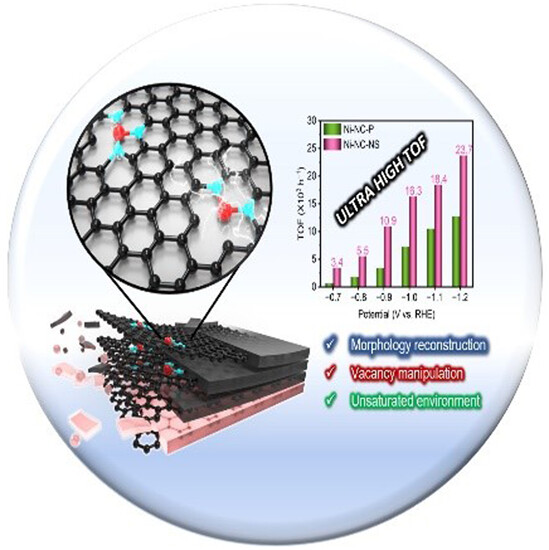
A groundbreaking approach has been developed to synthesize nickel single-atom catalysts (SACs), effectively preventing metal clustering, and ensuring structural stability. Through extensive experimental and theoretical investigations, the electrochemical properties of these SACs derived from two-dimensional metal–organic frameworks have been validated. This significant advancement in materials science, with a particular focus on electrochemical CO2 reduction, offers tremendous potential in the quest for carbon neutrality.
REVIEW
Structure–performance relationship of Au nanoclusters in electrocatalysis: Metal core and ligand structure
- First Published: 18 June 2024
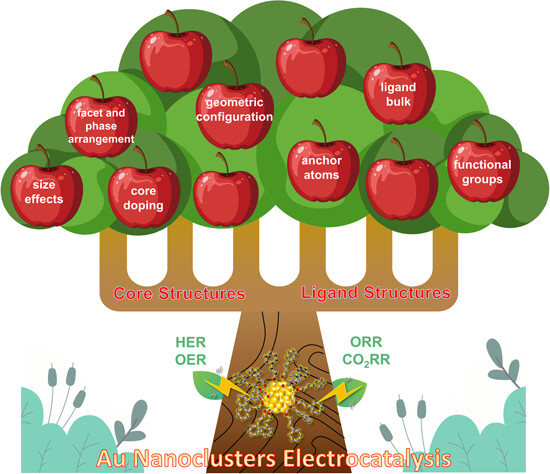
The structure–performance relationship is of great significance for electrocatalytic reactions. The core and ligand structures of Au nanoclusters, such as size effects, facet and phase arrangement, core doping and geometric configuration of the cores; anchor atoms, ligand bulk, and functional groups of the ligands, determine electrocatalytic performance including hydrogen evolution reaction (HER), oxygen evolution reaction (OER), oxygen reduction reaction (ORR), and CO2 reduction reaction (CO2RR).
RESEARCH ARTICLE
Enhancing electromagnetic wave absorption with core-shell structured SiO2@MXene@MoS2 nanospheres
- First Published: 15 February 2024
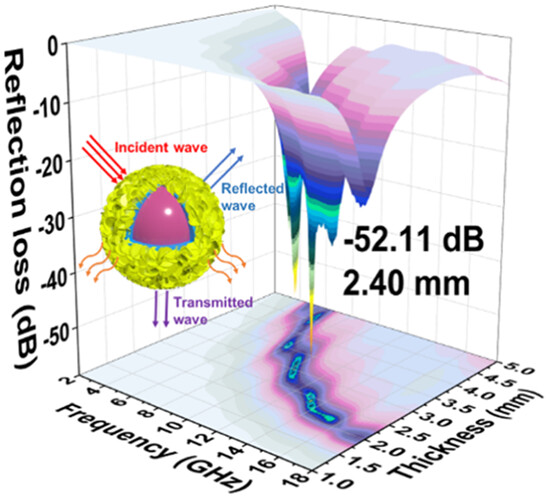
The sandwich-like structured SiO2@MXene@MoS2 nanospheres were synthesized by coating MoS2 nanosheets on SiO2@MXene, which is promising for strong electromagnetic wave absorption. Due to the formation of a unique structure, multiple loss mechanisms are achieved by a multipolarization synergistic effect. Thus, SiO2@MXene@MoS2 nanospheres exhibit a remarkable minimum reflection loss of −52.11 dB at 2.4 mm.
Unraveling the atomic interdiffusion mechanism of NiFe2O4 oxygen carriers during chemical looping CO2 conversion
- First Published: 27 February 2024
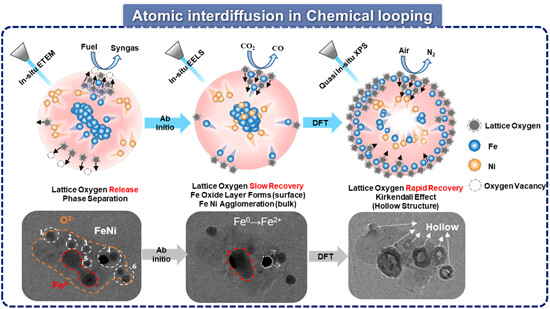
During chemical looping CO2 conversion, in situ environmental transmission electron microscopy–electron energy loss spectroscopy combined with quasi in situ X-ray photoelectron spectroscopy, and theoretical calculations have been utilized to reveal the migration and diffusion processes of lattice oxygen and metal atoms inside oxygen carriers. It is highlighted that the structure of the oxygen carrier depends on the migration rate of lattice oxygen.
Metal–N4 model single-atom catalyst with electroneutral quadri-pyridine macrocyclic ligand for CO2 electroreduction
- First Published: 15 February 2024
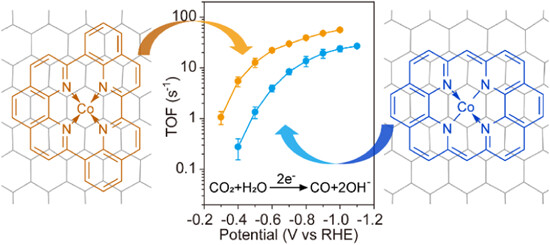
Conjugated macrocyclic complexes adsorbed on carbon supports are well-defined model catalysts to reveal the structure–property relationship of M–N–C single-atom catalysts. A cobalt complex with an electroneutral quadri-pyridine macrocyclic ligand is prepared and expresses higher activity toward CO2 electroreduction compared with the complex with an anionic quadri-pyridine ligand, due to its stronger ability to mediate the electron transfer process.
REVIEW
Research progress on electronic and active site engineering of cobalt-based electrocatalysts for oxygen evolution reaction
- First Published: 28 May 2024

Cobalt-based nanomaterials have been widely designed as efficient electrocatalysts for oxygen evolution reactions due to their electron orbitals. We summarize the recent development of cobalt-based nanomaterials relating to dimensional control, defect regulation (conductivity), electronic structure regulation, and so forth for electrocatalytic oxygen evolution reactions.
RESEARCH ARTICLE
Local coordination and electronic interactions of Pd/MXene via dual-atom codoping with superior durability for efficient electrocatalytic ethanol oxidation
- First Published: 15 March 2024
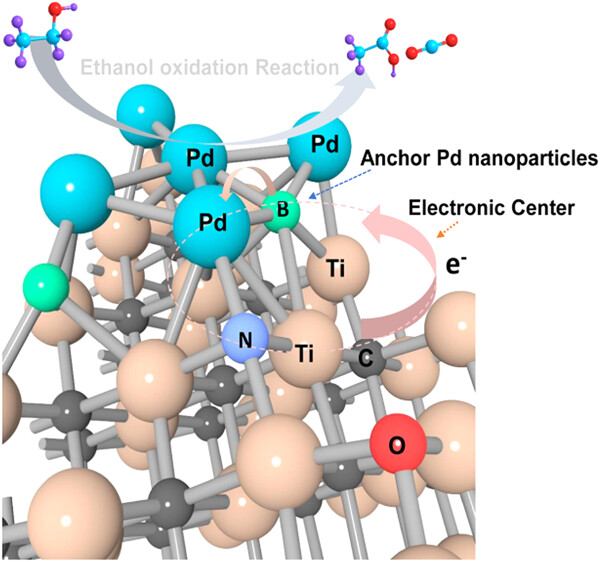
A catalyst comprising both a stable electronic center and strong bonds to anchor Pd nanoparticles via dual-atom codoping is developed to apply for efficient ethanol oxidation reaction (EOR) catalysis. The strong electronic Pd/MXene interaction and uniform distribution of Pd nanoparticles make the catalyst have high electrocatalytic activity and superior long-term durability during the EOR process.
Plasma-oxidized 2D MXenes subnanochannel membrane for high-performance osmotic energy conversion
- First Published: 27 February 2024
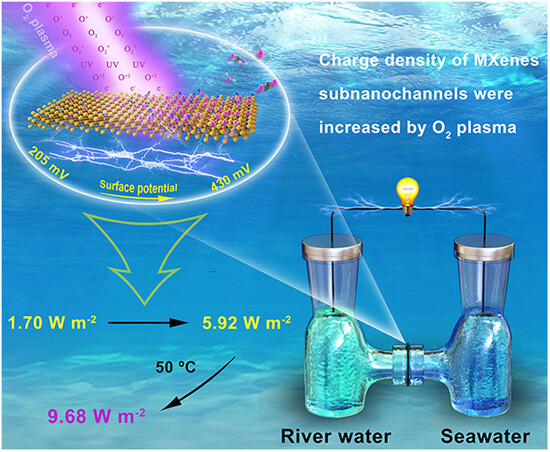
Oxygen plasma increases the surface potential of the MXenes subnanochannel membrane by 109.8% from 205 to 430 mV, thereby achieving the highest output power density of 5.92 W m−2 at room temperature and 9.68 W m−2 at 50°C compared with the charge-enhancing two-dimensional nanochannel membranes in the artificial sea-river water system.
Heterostructural NiFeW disulfide and hydroxide dual-trimetallic core-shell nanosheets for synergistically effective water oxidation
- First Published: 13 March 2024
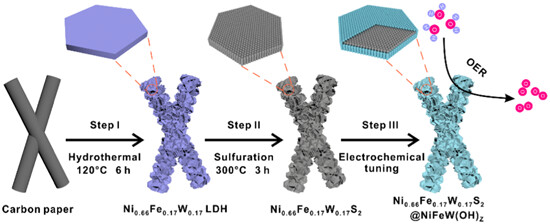
A dual-trimetallic core-shell heterostructural NiFeWS2@amorphous NiFeW(OH)z nanosheets array is directly grown on carbon paper to fabricate an integrated three-dimensional electrode for catalyzing alkaline water oxidation. This electrode exhibits excellent electrocatalytic activity and considerable stability, which are mainly due to the strong synergistic effect between the inner core with high conductivity and the outer shell with abundant active sites.
Manipulating photogenerated electron flow in nickel single-atom catalysts for photocatalytic CO2 reduction into tunable syngas
- First Published: 13 March 2024
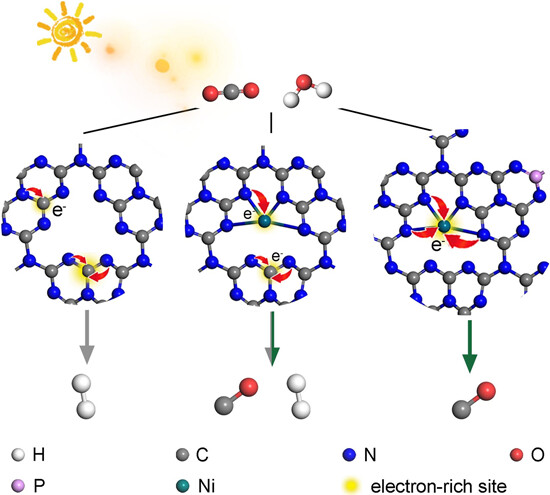
For a Ni single-atom-decorated carbon nitride catalyst (Ni1/P-CN), orienting the migration of photogenerated electrons to the carbon sites and Ni sites promotes the production of H2 and CO during photocatalytic CO2 reduction reactions, respectively. As such, syngas with adjustable CO/H2 ratios could be obtained for Ni1/P-CN by manipulating photogenerated electron flow to the target active sites.
Yttrium- and nitrogen-doped NiCo phosphide nanosheets for high-efficiency water electrolysis
- First Published: 15 March 2024
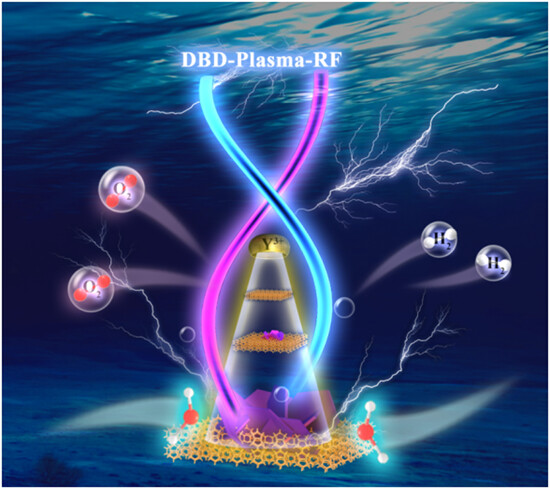
A N-YNiCoP nanosheet structure is in situ engineered on Ni–Co foam using a dual-plasma technique and acts as a bifunctional electrocatalyst for water splitting. The formed rich heterointerfaces and N-doping effectively tune the electronic states of the catalyst, resulting in high hydrogen evolution reaction and oxygen evolution reaction performances in an alkaline medium at an industrial-scale current density of 2000 mA cm−2.
Lignin-derived carbon with pyridine N-B doping and a nanosandwich structure for high and stable lithium storage
- First Published: 22 March 2024
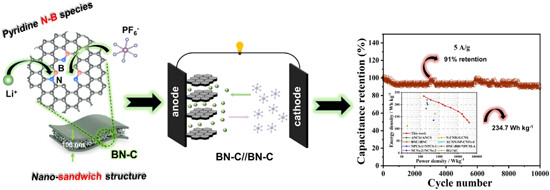
B, N codoped porous carbon (BN-C) with a nanosandwich structure and abundant pyridinic N-B species was prepared using the “self-assembly-template” method. Owing to the synergistic effect of the nanostructure and pyridinic N-B sites, the assembled symmetrical BN-C//BN-C full cell shows high capacity and ultralong cycling stability, superior to most of the other cells reported in the literature.
Reshaping Li–Mg hybrid batteries: Epitaxial electrodeposition and spatial confinement on MgMOF substrates via the lattice-matching strategy
- First Published: 15 March 2024
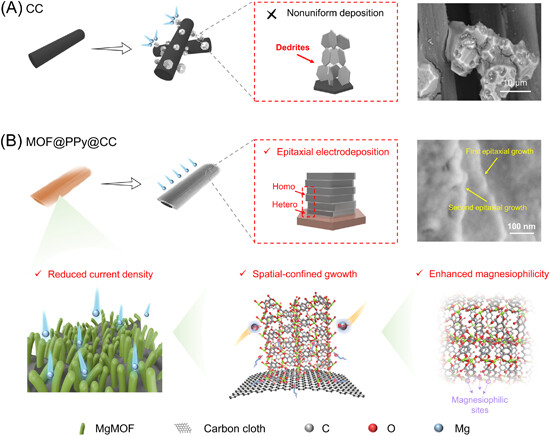
For the first time, the epitaxial electrodeposition of Mg atoms driven by the metal–organic framework (MOF) substrate was ingeniously designed via synergy of a magnesiophilic interface, lattice matching, and electrostatic confinement effects. The MgMOF@PPy@CC substrate could satisfy the prerequisite of epitaxial electrocrystallization of Mg. Simultaneously, the periodic electrostatic potential field could confine the reduced Mg0 species onto the local electron-enriched sites at the atomic level. Furthermore, the hierarchically porous MgMOF@PPy@CC host could efficiently reduce the local current density, thus suppressing the growth of Mg dendrites.
Driving inward growth of lithium metal in hollow microcapsule hosts by heteroatom-controlled nucleation
- First Published: 20 March 2024
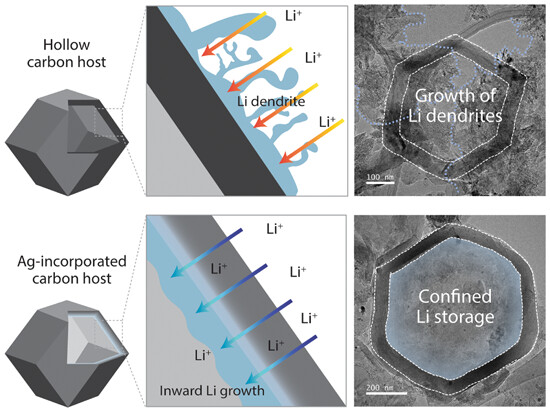
A metal–organic framework-derived hollow carbon microcapsule host with lithiophilic heteroatom for Li metal anodes is designed and synthesized using a combination of chemical etching, pyrolysis, and galvanic displacement reaction. Benefiting from the spacious hollow cavity and lithiophilic properties on the inner surface of the carbon shell, the inward growth of Li is prompted, facilitating reversible Li storage.
Ultrahigh thermoelectric properties of p-type BixSb2−xTe3 thin films with exceptional flexibility for wearable energy harvesting
- First Published: 07 March 2024
The effect of salt anion in ether-based electrolyte for electrochemical performance of sodium-ion batteries: A case study of hard carbon
- First Published: 13 March 2024
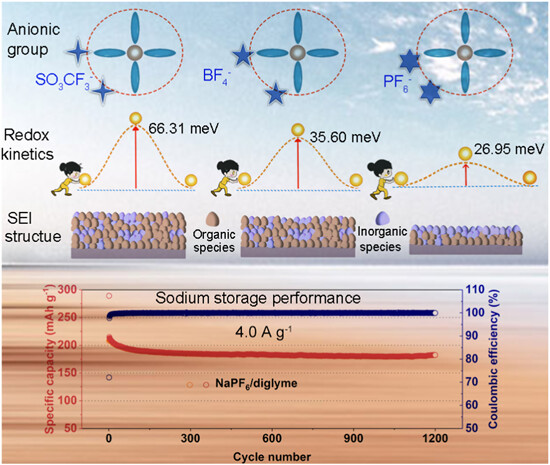
The PF6− anionic group in diglyme shows excellent compatibility with hard carbon, enabling superior antioxidation stability, high migration kinetics of Na+, fast ionic diffusion coefficient in bulk electrode, low energy barrier upon charge transfer, and robust solid electrolyte interface abundant with inorganic species, which results in improved performance for sodium-ion batteries.




